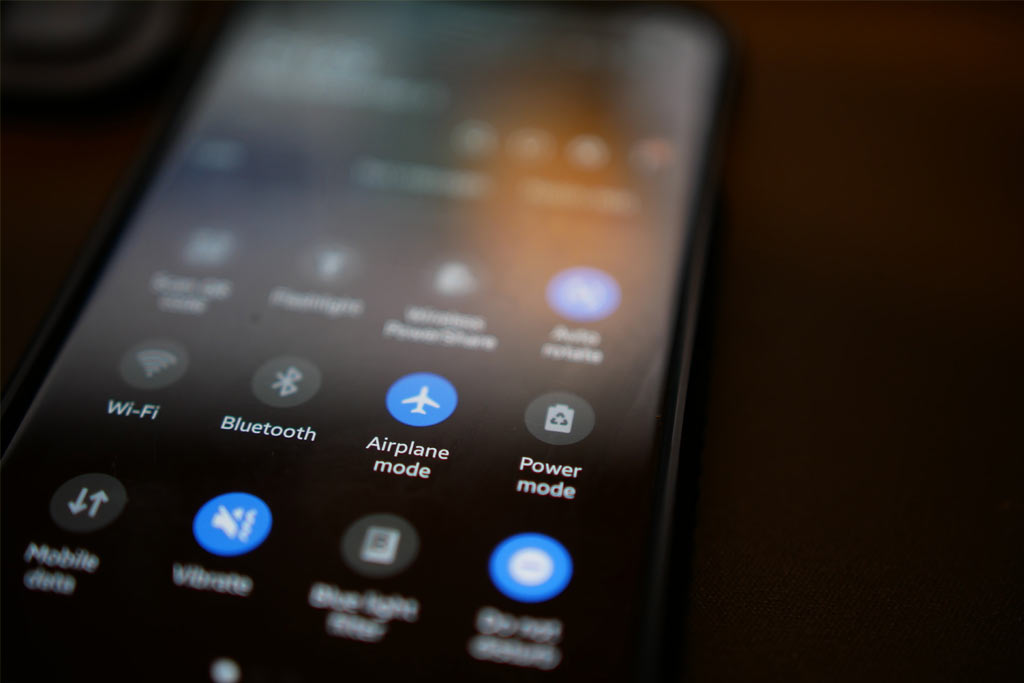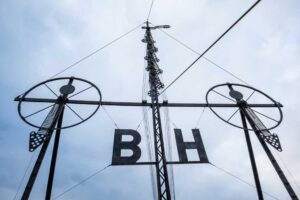What’s the big deal about using your phone on a plane?
Using your cell phone on a plane is a topic that has caused much confusion and debate over the years. In this post, we will explore the rules and regulations around cell phone usage on planes, what is allowed, and what is not.
First and foremost, it is important to understand that the Federal Aviation Administration (FAA) regulates the use of personal electronic devices (PEDs) on planes. This includes cell phones, tablets, laptops, and other portable electronic devices. The FAA has established guidelines that airlines must follow to ensure that PEDs do not interfere with the plane’s navigation or communication systems.
So, what is allowed when it comes to the use of mobile phones on planes? The answer is that it depends on the airline and the specific flight you are on. In general, the FAA allows the use of cell phones during certain parts of the flight, but there are restrictions for all airline passengers.
During taxi, takeoff, and landing, flight attendants will make an announcement that cell phones must be turned off and stowed away. This is because these phases of flight are considered critical, and any interference from cell phones could potentially be dangerous.
The use of cell phones during takeoff and landing is prohibited because it is believed that the signals emitted by electronic devices can interfere with the aircraft’s communication and navigation systems. This interference is known as electromagnetic interference (EMI), and it can cause problems with critical flight instruments, such as the altimeter and compass, which could potentially lead to a dangerous situation.
During takeoff and landing, the plane is operating at low altitudes and high speeds, which means that any interference caused by electronic devices can have a more significant impact. In addition, during these phases of flight, the pilots are communicating with the air traffic control and receiving critical information about the flight. Any EMI from electronic devices, or radio waves could disrupt these communications, leading to confusion and potential safety issues.
Has there ever been an incident involving cell phones on planes?
There have been several reports of electronic devices, including cell phones, causing interference with aircraft systems, but there has not been a conclusive case of a cell phone causing a major airplane problem or accident.
In the past, there have been reports of electronic and wireless devices causing interference with communication and navigation equipment. For example, in 2004, a passenger’s mobile phone caused a false alarm in the cockpit of a plane during takeoff, and in 2014, a passenger’s phone caught fire on a plane due to a faulty battery.
However, according to the Federal Aviation Administration (FAA), there has not been a confirmed case of cell phone use causing a major problem or accident in flight. The FAA and other aviation regulatory agencies continue to study the potential effects of electronic devices on flight safety and have recommended that passengers follow the rules and regulations set forth by airlines regarding the use of electronic devices during takeoff and landing as a precautionary measure.
It’s worth noting that the use of cell phones on planes is not just a matter of potential interference with aircraft systems but also of the potential disturbance to other passengers. Talking loudly on a cell phone can be disruptive to other passengers and may make it difficult for the flight crew to communicate important information during the flight. For this reason, most airlines still require passengers to turn off their cell phones during takeoff and landing and to use them only in airplane mode during the flight.
While there is no conclusive evidence that cell phone signals have caused an accident, the real reason is that it’s better to be safe than sorry. The Federal Aviation Administration (FAA) and other aviation regulatory agencies have conducted numerous studies over the years to determine the impact of electronic devices on flight safety. While these studies have not found conclusive evidence of a safety risk, they have still recommended that electronic devices be turned off during takeoff and landing as a precautionary measure.
However, the FAA allows pilots to use cellular service and other personal electronic devices in the cockpit during the flight, as long as they are used for specific purposes related to flight operations, such as communicating with air traffic control, checking weather conditions, or reviewing flight plans.
Pilots are also required to follow specific rules and procedures when using electronic devices in the cockpit. For example, they must use approved headsets and microphones to minimize the potential for interference with aircraft systems, and they must maintain a sterile cockpit during critical phases of flight, such as takeoff and landing, which means that non-essential communications and activities are prohibited.
In addition to cell phones, pilots may also use other electronic devices in the cockpit, such as tablets and laptops, for flight-related tasks. However, they must follow specific procedures and guidelines to ensure that these devices do not interfere with aircraft systems and do not distract them from their duties.
When a pilot uses a cell phone on a plane, it does not connect to cell towers on the ground. Instead, it connects to a specialized network of antennas on the plane that are designed to relay radio signals between the cell phone and the ground to maintain a cellular connection.
This network, known as a picocell or a “microcell,” is typically installed on larger commercial planes and allows pilots to use their cell phones for calls, texts, and data while in flight. The picocell uses a satellite link to connect to the ground-based cellular network, allowing pilots to make calls and use data as if they were on the ground.
Once the plane has reached a certain altitude (usually 10,000 feet), the pilot will make an announcement indicating that it is safe for passengers to use electronic devices. At this point, you can turn on your cell phone and use it in “airplane mode.”
What is Airplane Mode anyway?
Airplane mode, or “flight mode” is a setting on your phone that disables the cellular signal, Wi-Fi, and Bluetooth connections. This ensures that your phone will not interfere with the plane’s communication systems. While in airplane mode, you can use your phone to play games, listen to music, or watch videos. You can also use apps that do not require an internet connection, such as a camera app.
Airplane mode was first introduced in 1996 by Qualcomm, a technology company that specializes in wireless telecommunications products and services. At the time, the mode was called “Offline mode” and was designed for early mobile phones to disable the phone’s cellular data signal while still allowing other functions like games and alarms to work without disrupting aircraft communications.
In 2001, the US Federal Communications Commission (FCC) officially approved the use of “Airplane mode” for mobile phones, making it a standard feature for all mobile phones. The FCC allowed airlines to determine their own rules on the use of electronic devices on planes, but most airlines adopted a policy requiring passengers to turn off their electronic devices during takeoff and landing.
Over the years, the regulations around electronic devices on planes have evolved. In 2013, the FAA announced that it would allow airlines to permit the use of electronic devices during all phases of flight, as long as they are in airplane mode. Since then, most airlines have updated their policies to allow the use of electronic devices in airplane mode during all phases of flight, except for making phone calls and sending SMS messages which could cause possible interference with the airplane navigation systems.
How can you stay connected with the ground while on a flight?
Even without a cellular connection or ability to make voice calls, you may be able to stay connected with people on the ground via messaging apps.
Here are some of the reasons to use a messaging app when you’re on a flight:
- Convenience: Messaging is a convenient way to communicate, as it can be done quickly and easily from anywhere (even on an airplane), as long as you have a cell phone or other connected device. You can send a message at any time of the day, without the need for the recipient to be available for a phone call.
- Time-saving: Message is also a time-saving form of communication, as it keeps you having to engage in a lengthy phone conversation. This can be particularly useful when you are in a hurry or need to communicate a message quickly.
- Documentation: Messages provide a written record of your communication, which can be useful for future reference or in case of disputes.
- Non-intrusive: Messaging is a non-intrusive form of communication, as the recipient can choose when to respond to the message, without feeling pressured to answer immediately.
- Cost-effective: As long as you have a data connection, messaging is free and unlimited. It can be a cost-effective way to communicate, particularly if you are communicating with someone who is located in another country.
- Emoticons and Abbreviations: Messaging has become more and more relaxed over time, with emoticons and abbreviations becoming a popular way of expressing emotions and thoughts without having to write out full sentences. This can make it a fun way to communicate with friends and family.
In order for in-flight messaging to work, you’ll need to hop on Wi-Fi. Many airlines have installed in-flight Wi-Fi — permitting you to use messaging apps such as Skype, iMessage, WhatsApp, or Facebook Messenger, and illumy.
Here are some major airlines that currently offer free Wi-Fi on select flights:
- JetBlue – JetBlue offers free Wi-Fi on all of its flights within the continental United States.
- Norwegian Air – Norwegian Air offers free Wi-Fi on most of its flights within Europe.
- Emirates – Emirates offers free Wi-Fi on select flights, depending on the aircraft.
- Turkish Airlines – Turkish Airlines offers free Wi-Fi on select international flights.
- AirAsia – AirAsia offers free Wi-Fi on select flights within Asia.
Keep in mind that these in-air Wi-Fi networks may have limitations or different rules based on carrier. You may be limited to a certain amount of data or time, and some airlines may only offer it for certain flights or classes of service.
If you’re planning to use in-flight Wi-Fi, it’s a good idea to check with your airline ahead of time to see if they offer it and what the terms and conditions are. This can help you plan your usage and avoid any unexpected charges or limitations.
What else should a traveler keep in mind about in-flight connectivity?
Many airlines offer a variety of in-flight entertainment options to their passengers, including movies, TV shows, music, games, and more. Here are some airlines that are known for having great in-flight entertainment:
- Emirates – Emirates is known for having one of the most extensive in-flight entertainment systems, with over 4,500 channels of movies, TV shows, music, and more.
- Singapore Airlines – Singapore Airlines offers a wide selection of movies, TV shows, music, and games, as well as a variety of language options.
- Qatar Airways – Qatar Airways has an extensive collection of movies, TV shows, and music, as well as live TV and news channels.
- Cathay Pacific – Cathay Pacific offers a variety of entertainment options, including movies, TV shows, music, and games, as well as a feature that allows you to create your own playlist.
- Delta Air Lines – Delta Air Lines offers a variety of entertainment options, including movies, TV shows, music, games, and more, on its in-flight entertainment system, Delta Studio.
The quality and variety of in-flight entertainment can vary depending on the aircraft, route, and class of service, so it’s a good idea to check with your airline ahead of time to see what entertainment options are available on your flight.
If the in-flight entertainment options aren’t to your liking, it’s a good idea to plan ahead and download your favorite shows at home before you head for the airport:
Many popular streaming apps offer the ability to download content for offline viewing. Here are some examples of streaming apps that offer this feature:
- Netflix – Netflix allows users to download movies and TV shows for offline viewing on their mobile devices. Not all titles are available for download, but the app indicates which titles are available with a download icon.
- Amazon Prime Video – Amazon Prime Video also allows users to download movies and TV shows for offline viewing. Similar to Netflix, not all titles are available for download, but the app indicates which titles are available with a download icon.
- Hulu – Hulu offers a download feature for select movies and TV shows, which allows users to watch content offline without an internet connection. However, this feature is only available on Hulu’s ad-free plan.
- Disney+ – Disney+ allows users to download movies and TV shows for offline viewing on their mobile devices. The app indicates which titles are available for download with a download icon.
- HBO Max – HBO Max offers a download feature for select movies and TV shows, which allows users to watch content offline without an internet connection.
- YouTube Premium – YouTube Premium allows users to download videos for offline viewing and also offers an audio-only mode for listening to music while offline.
Note: Not all content on these platforms may be available for download, and some content may have a limited window of time for viewing offline. Additionally, downloading content may require additional storage space on your device, so it’s important to monitor your device’s available storage.
The short answer: Using cellular phones on a plane is allowed, but there are restrictions. During taxi, takeoff, and landing, your phone must be turned off and stowed away. Once the plane reaches a certain altitude, you can turn on your phone and use it in airplane mode. Making in-flight calls or sending text messages is generally not allowed, but you can use your phone to send messages over a data connection — as long as your aircraft has Wi-Fi installed onboard. It is important to follow the rules and regulations set forth by the FAA and your airline to ensure a safe and enjoyable flight for everyone.
Photo by Sten Ritterfeld on Unsplash.


